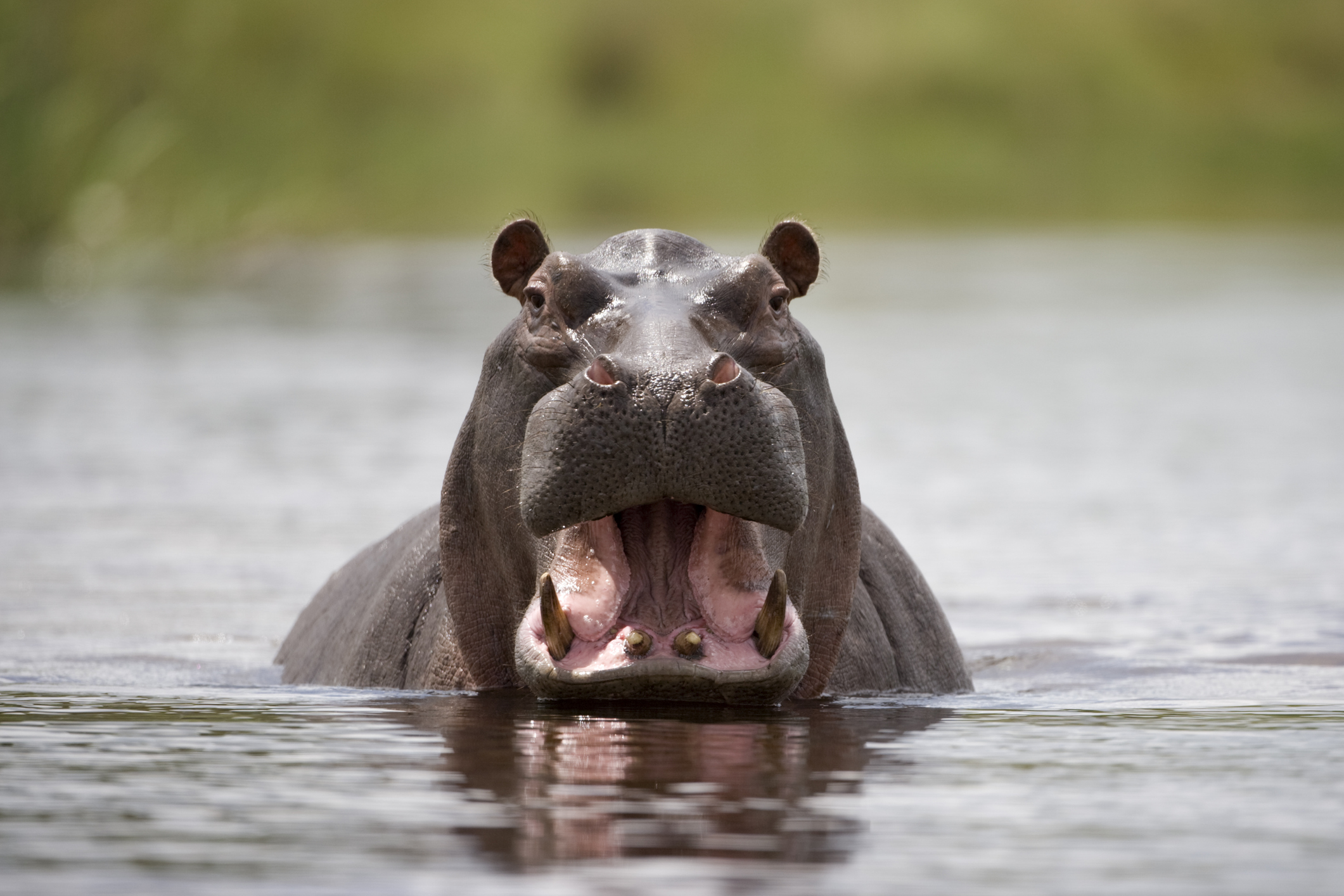Discover 17 animals beginning with H – which ones have we forgotten? Let us know…
From the very slimy hagfish to the majestic – and strange-looking – harpy eagle there’s a diverse array of fascinating creatures whose names start with the letter ‘H’.
17 animals starting with ‘H’
Hagfish
Hagfish are, probably, the slimiest animal in the world – and they can use their slime for lethal purposes.
One of the weirdest animals in the world, these eel-shaped, jawless fish possess specialised slime glands that have two types of cell: mucous cells that release mucin and thread cells that exude skeins (loosely coiled fibres) of protein around 15cm long. When mixed in seawater, the mucins and skeins create a copious amount of slime incredibly quickly.
Hare
Hares belonging to the genus Lepus and are known for their speed and powerful back legs.
Horned viper

The named ‘horned viper’ can be used to describe a couple of different viper species. In Europe, it refers to Vipera ammodytes, which is also known by variety of names including long-nosed viper, nose-horned viper and sand viper. It is sometimes described as the most dangerous snake in Europe.
Hercules beetle

The largest beetle in the world (by total length), the male Hercules beetle can reach up to 19cm in length – thanks to its impressive long horns, which are used to battle other males. The species is found in southern Mexico, central America and the Caribbean, and South America.
Harlequin ladybird

A very varied species, the Harlequin ladybird was introduced in many places as a control for aphids. It has since become very invasive, and became established in the Britain in 2004. It will eat the eggs and larvae of other ladybirds, and outcompete them for food.
Harpy eagle
One of the largest raptors in the world, the harpy eagle is native to Central and South America. Its rear talons are the same size of the claws of a grizzly bear, allowing the bird to lift and carry prey their own weight.
Harbour porpoise

A relatively small cetacean, the harbour porpoise was once called the ‘puffing pig’ thanks to the ‘chuff’ noise it makes as it breathes. It has a high metabolic rate, and in the cold waters around the UK, it needs to feed continuously day and night.
Hammerhead shark

So-named for their unusually shaped heads, the hammerhead sharks prey on other fish – particularly stingrays, which they are able to detect buried in the sand. We named it one of the weirdest sharks in the world .
Hoatzin

This strange-looking bird is also nicknamed the ‘stink bird’ as it smells! It has a diet of leaves, and it ferments these leaves in its gullet and crops, making it smell of manure. It is the national bird of Guyana, where it is called the Canje pheasant. We named it one of the weirdest birds in the world.
Hellbender

Growing up to 73cm in length, the hellbender is both the largest salamander and the largest amphibian in North America. It is fully aquatic, usually living beneath large rocks to provide protection from potential predators.
Huntsman spider

Renowned for the large size and fast speed, huntsman spiders can be differentiated from other spiders by the way in which their front legs extend forward. The largest is the giant huntsman spider, which is also the largest spider in diameter in the world.
House martin

One of the UK’s summer visitors, house martins are closely associated with humans, creating mud nests in the eaves of our houses – sometimes reusing their previous nests.
Hedgehog

One of Britain’s favourite mammals, hedgehogs are brown in colour and stocky, with short spikes, small ears, with bellies close to the ground and a short tail.
Hippo

The second largest animal on land after the elephant, the Hippopotamus or hippo is a fascinating species which is most powerful – and dangerous – in water. Male hippos weigh 1,600–3,200kg, and females 650–2,350kg.
Hummingbird

The world’s smallest migrating bird, catching sight of a tiny colourful hummingbird is an incredible wildlife spectacle.
Named after the humming noise their wings make in flight, there are over 350 known hummingbird species. The hummingbird is the only bird species which can fly backwards which comes in handy when feeding on the nectar of plants and insects.
Horse

A horse is a domesticated hoofed, plant-eating, mammal that is used for riding, driving and equestrian sport. They range in heights from the smallest horse breed, the Falabella, which stands just 68cm to 86cm high, to the largest horse breed, the majestic shire which stands a whole metre higher at an average of 173cm high.
Hinny

A hinny is produced when a horse stallion mates with a donkey mare. They look more like horse-like, but very similar to mules which is produced when a donkey stallion mates with a mare – a female horse.